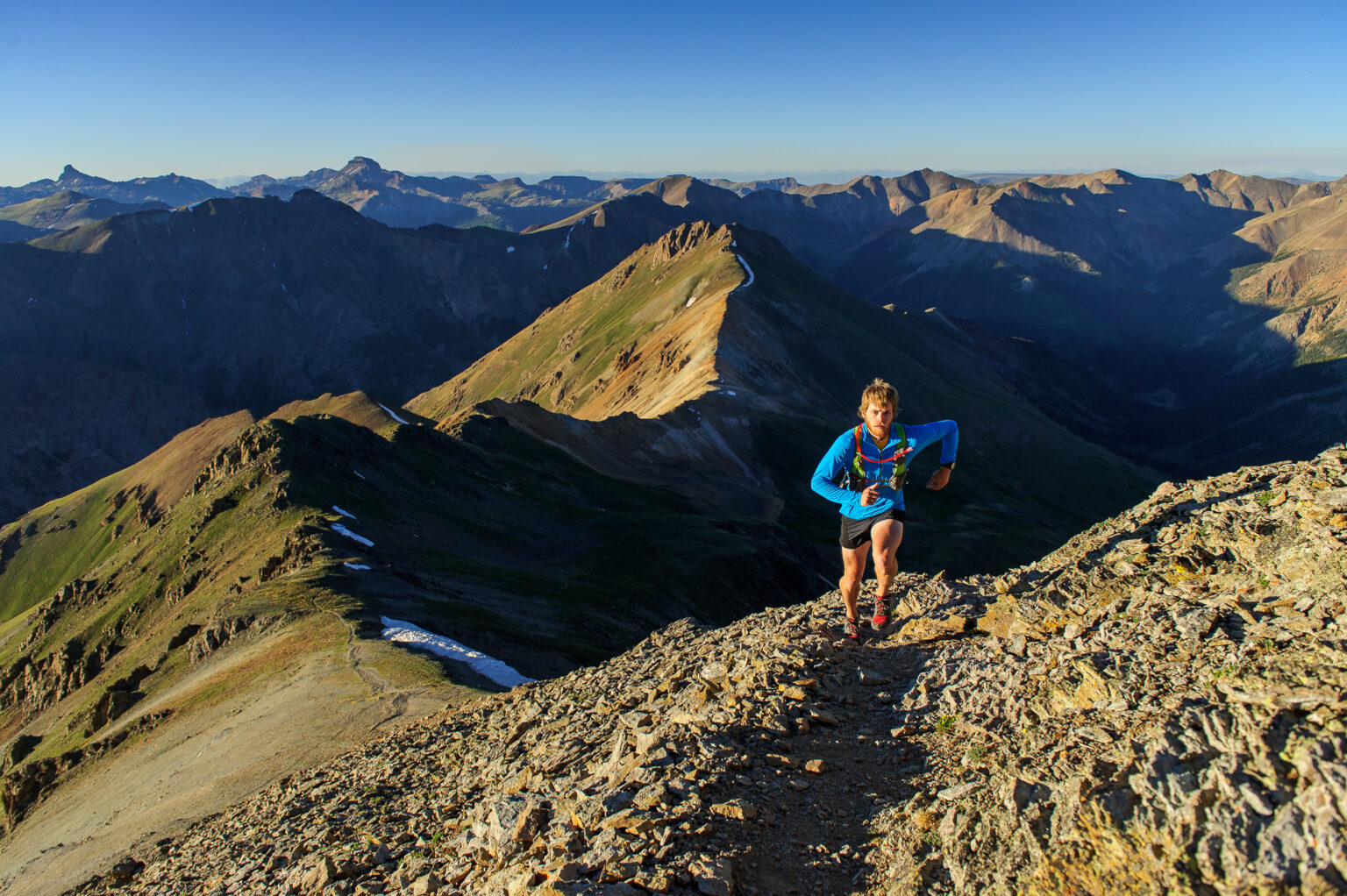Mountain athletes face unique challenges when training and performing at high altitudes, where reduced oxygen levels impact the body’s function and endurance. Understanding altitude’s effects is essential for safe, successful adventures and effective altitude acclimatization.
This guide provides an in-depth overview of altitude training, from physiological adaptations to altitude sickness symptoms, and offers preparation tips for those venturing into high-elevation environments. By learning how altitude affects physical performance, mountain athletes can improve their readiness for high-altitude climbs, runs, and expeditions.
DEFINING ALTITUDE ZONES
Altitude varies not only by elevation but also by its physiological impacts, with different zones presenting increasingly severe hypoxic conditions. Hypoxia—reduced oxygen availability—plays a critical role in the body’s response to altitude, which is why acclimatization is so essential. Whether you’re a mountaineer, trekker, or mountain runner, preparation is key to ensure you are well-adapted and able to sustain effort at altitude.
Low Altitude (Up to ~1,800 meters / 6,000 feet)
At this level, the body experiences minimal hypoxic stress, and most athletes adapt with little difficulty. This zone includes typical elevation changes many experience during hiking and doesn’t require specialized preparation beyond basic fitness.
Moderate Altitude (1,800-3,000 meters / 6,000- 10,000 feet)
This is the threshold where hypoxia begins to impact performance. Athletes unaccustomed to this altitude may experience mild symptoms if they do not acclimatize, especially if they increase exertion suddenly. From 1800m/6,000 ft, athletes can expect higher respiration and heart rates, along with an impact on recovery.
High Altitude (3,000-5,000 meters / 10,000- 16,500 feet)
At these elevations, gradual acclimatization is crucial, as symptoms of altitude sickness are more likely without an ascent protocol. This is the typical elevation also used for high-altitude camps, so it’s important to plan training and intensity very carefully.
Extreme Altitude (5,000 meters/16,500 ft and above)
Very high elevations, such as those found in the Himalayas or Andes, bring severe hypoxic stress. The “death zone” at ~8,000 meters (26,000 feet) is the upper limit where even acclimatized bodies struggle to survive for extended periods without supplemental oxygen. At extreme altitudes, the primary focus is survival, as prolonged exposure can lead to serious health risks.

PHYSIOLOGICAL RESPONSES TO ALTITUDE
At higher altitudes, the human body begins a cascade of responses to adjust to the reduced oxygen levels. These adaptations occur in both immediate and gradual phases, evolving over days to weeks. Knowing the timeline of these changes is crucial, as each stage helps the body manage different types of stressors.
Although these represent the typical changes over time, it’s important to note that every person responds a little differently- and may also respond differently during different exposures to altitude. This means that just because you had a good or challenging experience once, doesn’t mean that your body will always respond the same way.
Immediate Adaptations
Increased breathing rate
Hypoxia stimulates a rise in breathing rate to take in more oxygen per breath. This effect is immediate and involuntary, as the body attempts to compensate for the lower oxygen levels.
Elevated heart rate
The heart works harder to circulate oxygen-rich blood, leading to an increased resting and active heart rate. The initial cardiovascular response is increased heart rate at a given intensity—this can feel uncomfortable and may raise perceived exertion of exercise.
Cardiac reserve is narrowed
Maximum heart rate is limited and markedly so above 3500m/11,500ft. This means that sea level training/intensity zones are no longer valid and rate of perceived exertion (RPE) will be the best tool for managing intensity.
Short-Term Adaptations (Hours to Days)
Urination frequency
Increased urination is a byproduct of plasma reduction, helping maintain efficient oxygen-carrying capacity. This may be one of the first signs athletes notice at moderate altitude.
Increased red blood cell concentration
The reduction of plasma volume through urination, helps with red blood cell concentration and allows more oxygen to be carried per milliliter of blood.
Long-Term Adaptations (Weeks)
Increased red blood cell production
Over several weeks, the body produces more red blood cells, which permanently enhance oxygen transport. Athletes training at high altitudes benefit from these adaptations for a few weeks, even after returning to sea level.
Improved muscle efficiency
Muscles gradually adapt to using oxygen more efficiently, facilitating greater endurance and performance at altitude. This is one of the main adaptations that athletes are hoping for when undertaking a high altitude training camp—even when their goal event is not a performance at altitude.
Acclimatization and Adaptation Timescale

ALTITUDE SICKNESS AND WARNING SIGNS
Recognizing symptoms of altitude sickness is critical for all athletes venturing into higher altitudes. Without proper attention, minor discomforts can escalate into life-threatening conditions. Monitoring symptoms daily, keeping a journal, and sharing health updates with teammates can make a big difference.
Acute Mountain Sickness (AMS)
Symptoms: Headache, nausea, dizziness, and fatigue are early indicators. Often, AMS resolves with rest, hydration, and a slower ascent.
When to Worry: Persistent symptoms or worsening signs signal the need to descend to a lower altitude to prevent escalation. A good rule is “don’t ignore the warning bells,” as AMS can quickly progress if ignored.
High Altitude Pulmonary Edema (HAPE)
Symptoms: Shortness of breath, coughing (potentially with fluid), and chest tightness indicate HAPE, a dangerous fluid buildup in the lungs. Blueness in the lips or fingertips is a common sign and should not be ignored.
Action: Immediate descent is essential; HAPE is fatal if untreated. If descent is not possible, a hyperbaric chamber or oxygen support is necessary.
High Altitude Cerebral Edema (HACE)
Symptoms: Confusion, loss of coordination, and hallucinations are signs of HACE, where brain swelling results from hypoxia. Symptoms such as combativeness or irritability can be signs of severe altitude distress.
Action: Rapid descent and medical intervention are crucial, as HACE can be fatal within hours. Observing teammates for signs of neurological distress is critical, as individuals often don’t realize they are impaired.
COMMON MYTHS ABOUT ALTITUDE
Myths about altitude are common and can lead to dangerous assumptions. Here’s a look at some of the most pervasive myths:
Fitness protects against altitude sickness.
Fitness helps with physical performance, but it doesn’t prevent altitude sickness. Even highly trained athletes can experience severe symptoms if they ascend too quickly. Fitness can actually mask early symptoms if an athlete assumes their body will handle the altitude due to their training level.
You need to avoid caffeine to avoid altitude sickness.
Some believe caffeine exacerbates altitude symptoms, yet moderate caffeine intake is generally safe. In fact, for athletes used to caffeine, suddenly removing it may lead to withdrawal headaches. If you plan to avoid caffeine at altitude, start the detox well before your ascent.
You need a magic pill like Acetazolamide (Diamox).
Acetazolamide is sometimes prescribed prophylactically to prevent or lessen AMS symptoms for those planning a rapid ascent or for those with a history of AMS despite following a gradual ascent protocol. However, it is not a guaranteed preventive measure and is no replacement for a controlled ascent and appropriate acclimatization plan.
uphill athlete podcast series:
altitude
GENDER DIFFERENCES IN ALTITUDE RESPONSE
Men and women may experience altitude differently due to physiological and hormonal factors.
Ventilatory response
Women may have a heightened ventilatory response (increased breathing rate) at higher altitudes, particularly in the luteal phase of their menstrual cycle, which can lead to more respiratory discomfort.
Metabolic variations
Women generally rely more on fat for energy at altitude, while men are more carbohydrate-dependent. This may mean that women, especially pre-menopausal women with higher estrogen levels, need to adjust their energy sources when exerting at high intensity.
Iron deficiency
Due to menstrual blood loss, women, particularly those with heavy periods, may face an increased risk of iron deficiency. Ensuring iron levels are optimized before ascending is crucial for effective acclimatization. For men and women alike, ensuring that baseline iron and ferritin levels are optimized can help avoid complications, especially for those on vegetarian or vegan diets.
PREPARING FOR ALTITUDE
Thorough preparation is the best defense against altitude-related challenges. Establishing a foundation well before departure can prevent many of the common issues associated with altitude.
Physical Preparation
- Adequate training: Build an aerobic base and familiarize yourself with your own exertion cues, such as heart rate and Rate of Perceived Exertion (RPE), which can serve as reliable guides at altitude. At altitude, heart rate zones may not align with sea-level training, so understanding RPE can help avoid overexertion.
Nutritional Considerations
- Iron: Iron levels should be checked and optimized, as iron is crucial for red blood cell production, a key adaptation to hypoxia.
- Carbohydrates: Carbohydrates become a preferred energy source at altitude. Those on low-carbohydrate, high-protein, or high-fat diets should gradually increase their carbohydrate intake before their travels so that they will prepared for a change in regular dietary intake
Environmental Preparation
- Hypoxic Tents or Chambers: Simulated altitude environments like hypoxic tents or altitude chambers can provide a head start on acclimatization, potentially helping athletes reduce time spent acclimating on the mountain itself. While these methods do not replace on-mountain acclimatization, they offer valuable pre-acclimation benefits which could reduce the impact of hypoxic stress in the early days on the mountain.
- Heat Training: As an alternative acclimatization technique, heat training can trigger some adaptations similar to altitude training, such as increased plasma volume and concentrated red blood cells. It can be a complementary method for athletes with limited access to hypoxic environments.
CONCLUSION
Acclimatizing to altitude is a process that requires respect, knowledge, and preparation. While fitness and experience are helpful, the best protection against altitude-related illness is to approach ascents thoughtfully, listen to your body, and make conservative decisions when needed.
In future articles, we’ll delve deeper into specific altitude-related topics, including nutrition, pre-acclimatization protocols, and the impact of different environmental conditions at altitude. With these foundational insights, you’ll be better prepared to tackle high-elevation goals.

